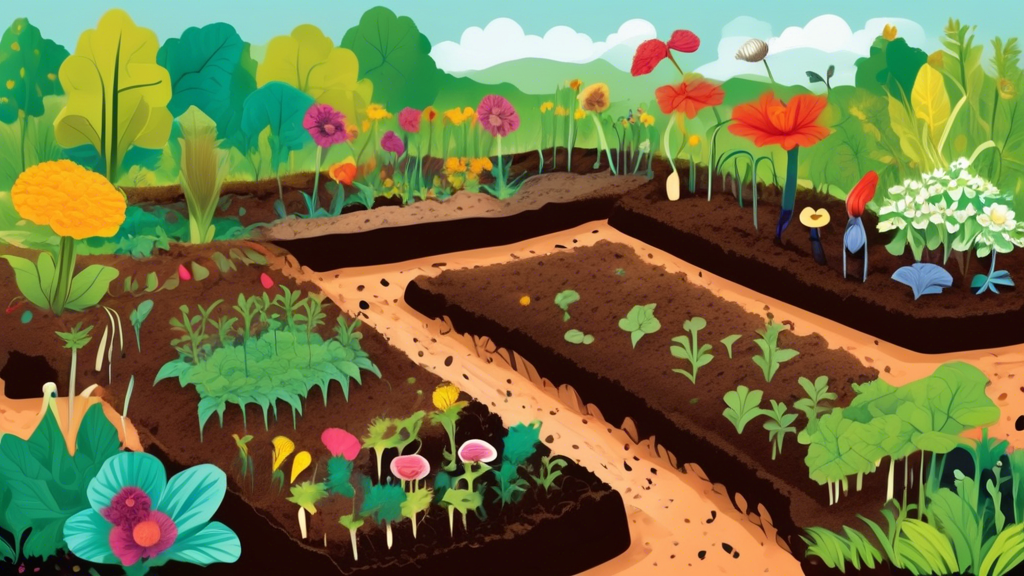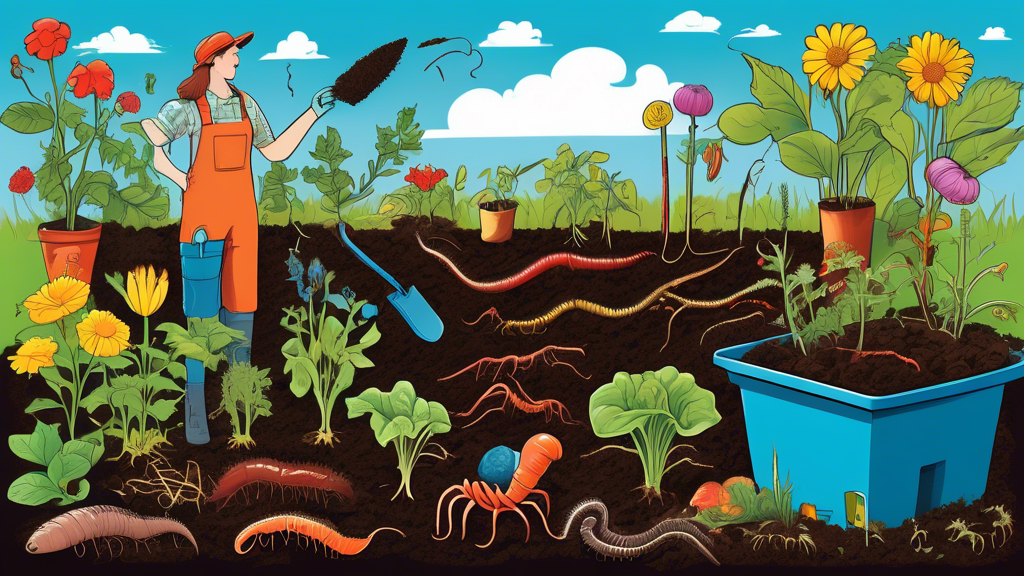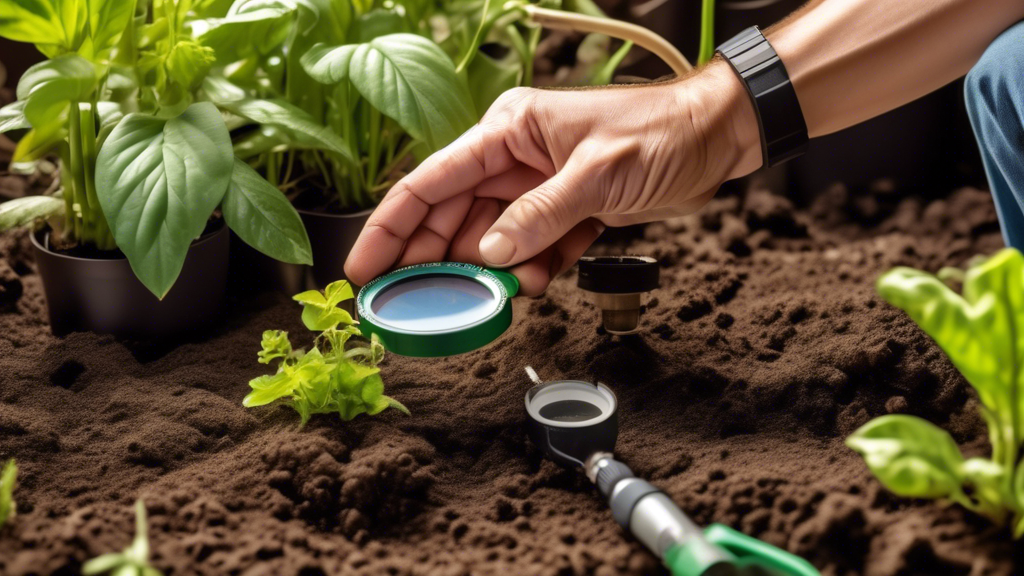
Beyond the Basics: Advanced Companion Planting Strategies for Experienced Gardeners
You already know that tomatoes love basil and carrots get along with onions. But advanced companion planting isn’t about memorizing simple pairs; it’s about orchestrating your entire garden as a living, breathing ecosystem. This guide is for those ready to move from gardener to ecosystem manager, leveraging deep plant relationships for unparalleled resilience, yield, and health.
The Core Principles of Advanced Companion Planting
Moving Beyond Pest Control: The Four Functions of a Companion
Basic guides focus on pest repellence, but a true companion serves multiple, dynamic roles.
- Dynamic Accumulators: Plants like comfrey and borage have deep taproots that “mine” nutrients like potassium and calcium from the subsoil, making them available to shallow-rooted neighbors when their leaves decompose.
- Trap Cropping: Strategically sacrifice a crop. Plant nasturtiums to lure aphids away from your brassicas, or radishes to attract flea beetles away from your eggplants.
- Living Mulches & Ground Covers: Low-growing plants like clover or creeping thyme form a living carpet that suppresses weeds, retains soil moisture, and regulates soil temperature, all while fixing nitrogen.
- Architectural Support: Use tall, sturdy plants like sunflowers or corn as natural, living trellises for climbers like pole beans and cucumbers.
Understanding Allelopathy: The Hidden Chemical Warfare
Allelopathy is the phenomenon where plants release biochemicals that influence the growth, survival, and reproduction of other plants.
- Positive Example: French Marigolds (Tagetes patula) release alpha-terthienyl, a compound that suppresses root-knot nematodes in the soil.
- Negative Example (The Unique Insight): Everyone knows about the toxic juglone from Black Walnut trees. But few realize that the beloved sunflower can have a similar, though less severe, allelopathic effect. Sunflowers release compounds that can inhibit the germination and growth of potatoes and pole beans, so avoid planting them in immediate proximity.
Implementing Complex Polycultures & Plant Guilds
Designing a “Three Sisters Plus” Guild
Elevate the classic Native American trio of corn, beans, and squash into a more resilient polyculture.
- The Fourth Sister (Structure & Pest Management): Add sunflowers for extra vertical structure and to attract birds that will prey on pests.
- The Fifth Sister (Trap Crop & Spice): Interplant nasturtiums. They act as a powerful trap crop for aphids, and their vibrant flowers and peppery leaves are edible.
Creating a Self-Fertilizing Vegetable Patch
Move beyond crop rotation and integrate nitrogen-fixers directly into your beds.
Example: Instead of planting a winter cover crop, sow crimson clover between your established tomato plants. As the tomatoes grow, the clover acts as a living mulch. Before the clover goes to seed, “chop and drop” it—cut the foliage and let it decompose at the base of your tomatoes as a nutrient-rich green manure.
Advanced Spacing and Succession Strategies
Succession Companion Planting: The Relay Race
Plan your garden so one plant’s lifecycle seamlessly supports the next in the same space.
Example: Sow radish and carrot seeds together. The fast-germinating radishes break up the soil crust and mark the row. They are harvested in 25-30 days, just as the slower-growing carrots need the extra space and resources to bulk up.
Vertical Stacking for Maximum Space Efficiency
Think in three dimensions, utilizing every inch of airspace, canopy, and soil depth.
| Vertical Layer | Plant Example | Function |
|---|---|---|
| Canopy/Climber | Pole Beans on a Trellis | Provides food and fixes nitrogen. |
| Mid-Height | Broccoli or Tomatoes | Main season crop, utilizes mid-level light. |
| Low-Growing | Spinach or Lettuce | Shade-tolerant leafy green. |
| Root Zone | Carrots or Radishes | Utilizes deep soil space without competing for light. |
| Ground Cover | Creeping Thyme | Suppresses weeds, conserves moisture. |
Addressing Common Garden Challenges
“My Companions Aren’t Working as Advertised”
The Issue: You planted basil with your tomatoes but still have hornworms. This often happens when we treat companion planting as a simple silver bullet.
The Advanced Solution: A single companion plant can’t compensate for a weak ecosystem. Focus on building overall soil health and, crucially, plant diversity. Integrate a wide variety of flowering herbs (dill, cilantro, borage) throughout the garden to attract a stable population of predatory insects like parasitic wasps that will control the hornworms for you.
“My Garden is Too Dense and Competition is High”
The Issue: Enthusiasm for polycultures can lead to overcrowding, resulting in poor air circulation, disease, and stunted plants all competing for the same resources.
The Advanced Solution: It’s not about density alone; it’s about strategic layering. Focus on combining plants with different root depths (deep taproots vs. shallow fibrous roots) and light requirements (full sun vs. partial shade). Practice ruthless thinning to give the remaining plants the space they need to thrive.
Beyond Vegetables: Integrating Flowers and Herbs Systematically
The Power of Umbellifers and Aster Families
Don’t just plant pretty flowers. Plant with purpose by targeting specific botanical families known to be powerhouses for beneficial insects.
| Plant Family | Example Plants | Primary Beneficial Insects Attracted |
|---|---|---|
| Umbellifers (Apiaceae) | Dill, Fennel, Cilantro, Queen Anne’s Lace | Parasitic Wasps, Hoverflies, Predatory Beetles |
| Asters (Asteraceae) | Calendula, Chamomile, Yarrow, Sunflowers | Ladybugs, Lacewings, Hoverflies, Pollinators |
Frequently Asked Questions (FAQs)
Can companion planting completely replace pesticides?
For most home gardeners, a meticulously planned and diverse advanced companion planting system can drastically reduce, and often eliminate, the need for synthetic pesticides. It shifts the paradigm from “curing” a pest problem to “preventing” it by creating a balanced ecosystem where pests are kept in check by their natural predators.
How do I track and measure the success of my advanced companion planting strategies?
Success is more than just the absence of pests. Keep a detailed garden journal. Note quantitative data like final yields and qualitative observations like plant vigor, the diversity and frequency of beneficial insects (e.g., “noticed lacewing eggs on the fennel”), and soil health. Compare this data to previous years or a small, non-companion planted control section.
Is there a risk of companion plants becoming invasive?
Absolutely. Part of advanced planning is understanding the life cycle and vigor of every plant in your guild. Vigorous self-seeders like borage, dill, and mint (which should always be container-grown) can easily overtake a bed if not managed. Be prepared to edit your garden, pulling volunteers to maintain balance.
Conclusion: Becoming an Ecosystem Architect
Mastering advanced companion planting is a journey of continuous observation and experimentation. It’s about fostering a web of relationships, not just planting a list of “friends.” Start by integrating one new concept this season—perhaps a “Three Sisters Plus” guild or a systematic planting of umbellifers. Embrace your role not just as a gardener, but as the architect of a thriving, dynamic, and resilient ecosystem.






